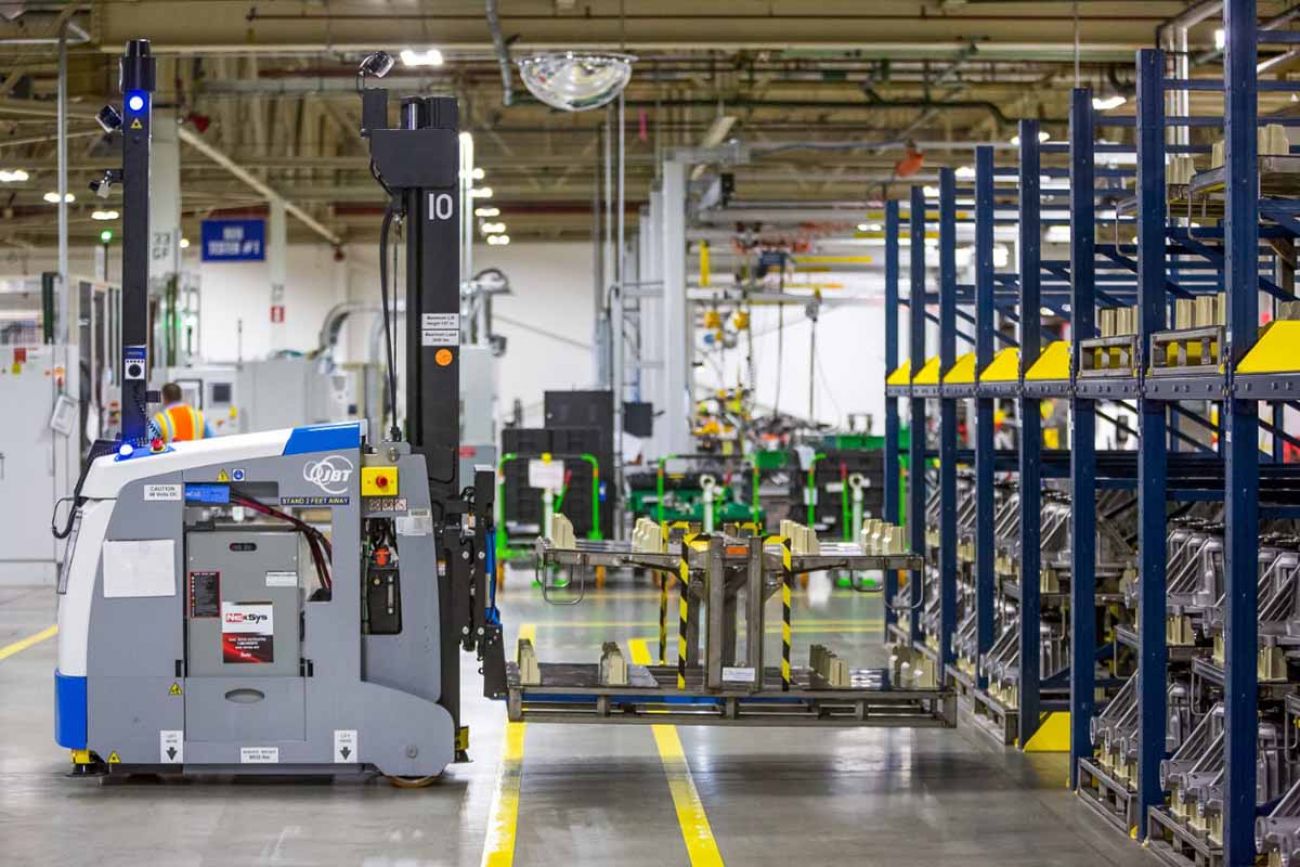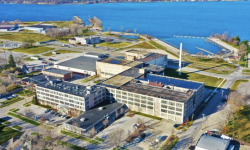Another real estate shortage: Grand Rapids running out of industrial space

In a city with over 100 million square feet dedicated to factories and warehouses, finding a building for a business to expand or move into might seem easy.
Instead, Grand Rapids is running out of industrial space.
The situation is now acute enough that economic developers say expansion of properties that serve the industrial sector — including industrial parks and investment in speculative construction — is a top issue for them in 2022.
Related:
- For booming Grand Rapids, a larger ambition: Midwest technology hub
- After losing out on Ford plants, Michigan fast-tracks new business incentives
- As Latinos grow in Grand Rapids, financial program boosts their businesses
- West Michigan reverses Chicago exodus, gaining residents as state stagnates
- In booming Grand Rapids, many Black residents left out of city’s comeback
At midyear 2020, about 2.7 million square feet of industrial space in the Grand Rapids region was available for lease, giving it an already low vacancy rate of 2.25 percent.
In the year that followed, it fell further. By the end of this past summer, it stood at 1.7 percent.
“In the grand scheme of things, that's zero,” said Randy Thelen, president and CEO of The Right Place, an economic development group.
Thelen spoke Thursday at the annual economic forecast meeting for his group, which represents the greater Grand Rapids region.
Much of his message was positive as the area’s businesses end their second year of operating in the pandemic: About 80 percent of companies his group surveyed increased sales during 2021, even as many faced significant hiring challenges, Thelen said. And 63 percent said they are looking to grow.
“They're looking to add equipment, they're looking at technology, or they're looking to expand their business,” Thelen said.
Yet they’re finding record-setting constraints in the industrial real estate market, even as state officials make tax incentives more available for expanding businesses. The problem facing the region is not just a shortage of listings.
“Of the buildings that are available, a good portion of that is either very old or not truly habitable modern space,” Steve Marcusse, senior industrial real estate advisor at Advantage Commercial Real Estate in Grand Rapids, told Bridge Michigan.

“There's almost literally one or two industrial buildings for sale of any size in town anywhere,” he said. “There's a little bit more space for lease, but that's just because developers are actually building some spec space, but some of it isn't done yet.”
Industrial real estate is home to job clusters, representing the properties that house manufacturing and other production, along with warehouses and other logistics functions. The range of buildings can include everything from large-scale distribution centers with significant truck access to automotive suppliers to high-tech companies that require high levels of electrical power or cleanrooms for production.
The lack of availability of that type of space is hurting existing businesses that want to expand, including manufacturing, which Thelen described as “roaring back through this economy.” E-commerce and the cannabis industry also have become major tenants in the region’s industrial space.
As spaces fill to record low vacancies, the situation is also putting pressure on business recruiting efforts, as the shortage of properties that can be easily adapted to a new operation are limited.
“How do we court and attract new companies?” Thelen sasked. “We do not have plug-and-play industrial space for them to go today. Period.”
He said “very few markets in the country have the low level of vacancy that we have here. And we've got to find a way to address that. “
Nationally, the average industrial vacancy rate in the U.S. fell “at the fastest pace ever recorded,” according to a report from real estate consultants Plante Moran Cresa. It now is at a record-low 4.6 percent — prompting record rent growth of 6.7 percent.
The national pace prompted 450 million square feet of new industrial space construction at year-end, 2.5 times the average.
Metro Detroit, which has about 3.5 times the industrial capacity as greater Grand Rapids, had a vacancy rate at the end of September of 4.65 percent, according to data from Signature Associates. That represents a drop of nearly 1 percentage point from the previous quarter, a pace that the brokerage said could continue into the first half of 2022.
The highest industrial vacancy rate in the Metro Detroit market was 5.5 percent in the corridor from Dearborn to Brownstown Township, while the lowest was 4.03 percent in the area covering much of Macomb County, including Warren.
While Grand Rapids is just a fraction of the size of the nation’s largest metro markets, like Dallas, where construction is booming, its ability to attract investment remains high, Thelen said.
However, many factors are complicating the market, Marcusse said. He suspects the vacancy rate will remain low for at least a few years due to the lack of vacant land located near highways and with utilities available that could be easy to develop.
Another concern is building costs, which have escalated due to supply chain slowdowns. While rental rates are increasing to the $5 to $8 per square foot annually range, he said they’re not yet high enough to support top-of-market construction costs for the typical regional business.
Rather than renting, delivery giant Amazon is building a sorting and delivery center next to its 850,000-square-foot fulfillment center southeast of Grand Rapids in Gaines Township, and it recently opened a delivery station in Walker, northwest of the city, that includes third-party delivery companies as tenants.
The Right Place said it is working with commercial brokers across the region, looking for sites that can best accommodate business park development.
Thelen said that search also could turn into discussions with municipal leaders over zoning and redevelopment issues as the regional impact of industrial development is considered.
“Business parks need to be spread throughout the region,” Thelen said.
“We also need to look to the urban cores, and make sure we put job-generating sites together next to the population base, instead of people having to drive to the job.“
Meanwhile, many companies are coping with their need to expand in the same way they are temporarily managing the workforce decline, Marcusse said.
“They're just trying to do more with less and pump out more product in the same amount of space with the same amount of people,” he said. “But they know that, ultimately, to really take that next big step they need to go to a new facility, better facility, bigger facility and get more people.”
Business Watch
Covering the intersection of business and policy, and informing Michigan employers and workers on the long road back from coronavirus.
- About Business Watch
- Subscribe
- Share tips and questions with Bridge Business Editor Paula Gardner
Thanks to our Business Watch sponsors.
Support Bridge's nonprofit civic journalism. Donate today.
See what new members are saying about why they donated to Bridge Michigan:
- “In order for this information to be accurate and unbiased it must be underwritten by its readers, not by special interests.” - Larry S.
- “Not many other media sources report on the topics Bridge does.” - Susan B.
- “Your journalism is outstanding and rare these days.” - Mark S.
If you want to ensure the future of nonpartisan, nonprofit Michigan journalism, please become a member today. You, too, will be asked why you donated and maybe we'll feature your quote next time!




